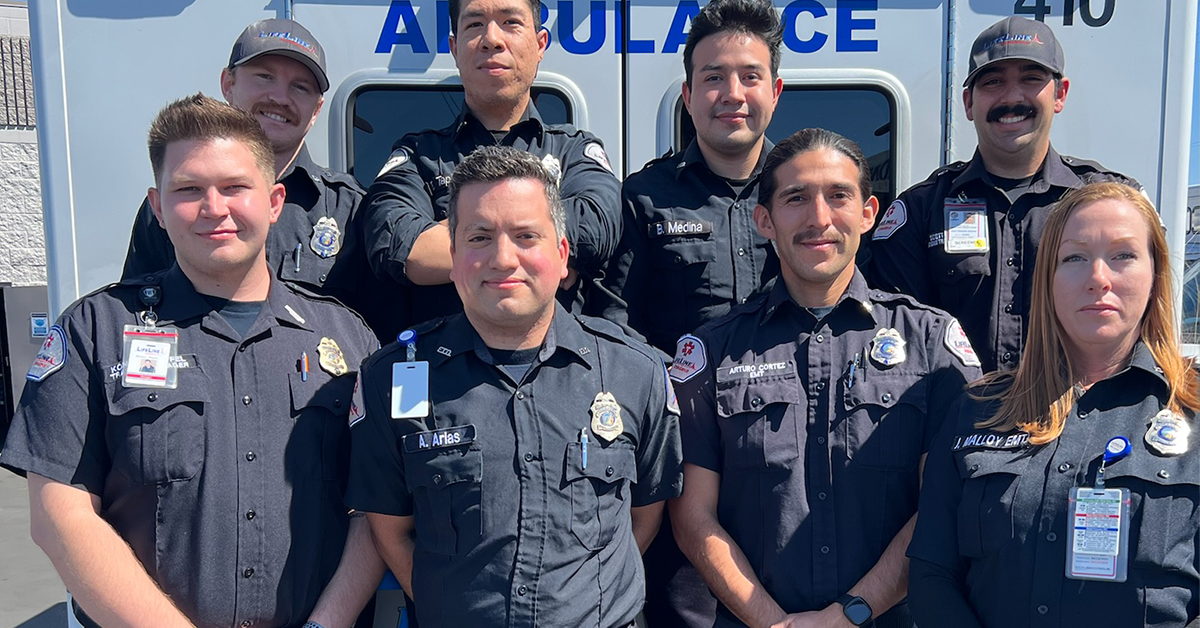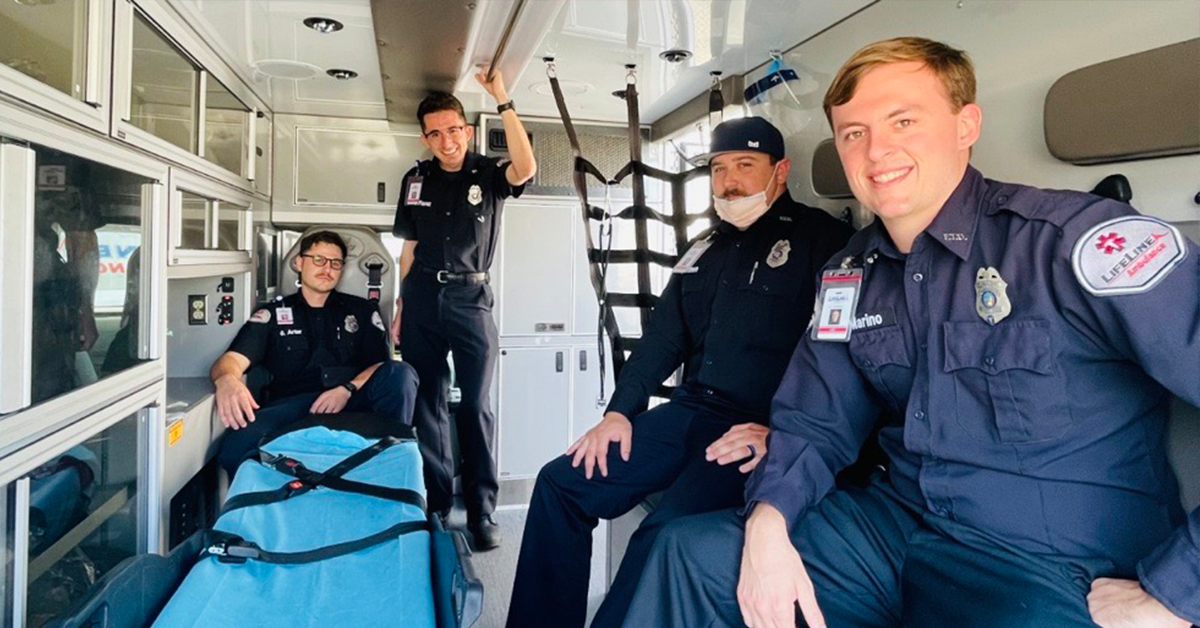A career in Emergency Medical Services (EMS) offers an opportunity to make a meaningful impact on people’s lives, while providing a challenging and rewarding professional experience. Whether you’re interested in becoming an Emergency Medical Technician (EMT) or advancing to a Paramedic role, the EMS field requires specialized training, certification, and a commitment to continuous learning. For those in Los Angeles and Southern California, LifeLine EMS offers a clear pathway to build and grow a career in EMS. This article explores what you need to know to start and succeed in this dynamic and essential field.
Understanding the Role of EMS Professionals
EMS professionals are frontline healthcare providers who respond to medical emergencies, provide critical care, and transport patients to medical facilities. Working in this field requires a combination of medical expertise, quick decision-making, and the ability to remain calm under pressure.
Key Responsibilities of EMS Professionals:
- Emergency Response: EMS teams are often the first on the scene during medical emergencies such as accidents, cardiac events, or trauma.
- Patient Assessment: EMTs and Paramedics assess patients to determine the severity of their injuries or conditions, providing appropriate interventions to stabilize them.
- Lifesaving Interventions: EMS professionals are trained to administer treatments like CPR, wound care, and basic or advanced airway management.
- Patient Transport: Transporting patients to hospitals while providing ongoing medical care is a core responsibility of EMS providers.
Steps to Building a Career in EMS
Building a successful career in EMS requires a structured approach that includes education, certification, and field experience. Here are the essential steps you need to follow:
1. Complete the Necessary Education and Training
To become an EMS professional, you must first complete the required education and training. The level of training depends on the specific role you are pursuing, whether as an EMT or Paramedic.
EMT Training
The first step for most aspiring EMS professionals is to complete EMT training, which provides the foundational skills needed to work in the field. EMT training programs typically take a few months to complete and cover basic emergency medical procedures.
- Course Topics: EMT training covers topics such as CPR, basic airway management, patient assessment, trauma care, and administering medications like oxygen and epinephrine.
- Hands-On Practice: EMT courses include both classroom instruction and practical hands-on experience, such as simulated emergency scenarios and clinical rotations.
- Program Length: EMT training programs typically last from 3 to 6 months, depending on whether you attend full-time or part-time.
Paramedic Training
For those looking to take on more advanced responsibilities, becoming a Paramedic requires additional training beyond the EMT level. Paramedics are trained to provide more complex medical interventions and have a broader scope of practice.
- Advanced Topics: Paramedic training includes advanced topics such as pharmacology, cardiac care, advanced airway management, and administering intravenous medications.
- Clinical Rotations: Paramedic programs include extensive clinical rotations in hospital emergency departments, intensive care units, and operating rooms, as well as field internships with experienced Paramedics.
- Program Length: Paramedic training programs generally take 12 to 24 months to complete and are more rigorous than EMT courses.
2. Obtain Certification and Licensure
After completing your training, you must pass certification exams to legally work as an EMT or Paramedic. The certification process typically includes both written and practical exams that assess your knowledge and skills.
EMT Certification
- National Registry of Emergency Medical Technicians (NREMT): EMTs must pass the NREMT certification exam, which includes a computer-based cognitive exam and a practical skills test.
- State Licensure: Once you pass the NREMT exam, you must apply for state licensure in California (or your specific state) to begin working as an EMT.
Paramedic Certification
- NREMT Paramedic Exam: Paramedics must pass the NREMT Paramedic exam, which also includes both cognitive and practical components.
- State Licensure: Similar to EMTs, Paramedics must obtain state licensure after passing the NREMT exam to practice in their state.
3. Gain Field Experience
Field experience is critical for building a successful career in EMS. Working in real-world situations helps refine your skills, build confidence, and prepare you for more advanced roles.
- Entry-Level Roles: Many EMS professionals start their careers working for ambulance services, fire departments, or private EMS companies. These roles provide valuable on-the-job experience and exposure to various types of medical emergencies.
- Continuous Learning: As you gain experience in the field, you will continue to develop your problem-solving abilities, decision-making skills, and familiarity with different medical procedures.
4. Advance Your Career with Continuing Education
Continuing education is a key component of long-term career success in EMS. Whether you want to advance to a supervisory position, specialize in a particular area of care, or become a Paramedic, ongoing learning is essential.
Specializations and Advanced Certifications
As you progress in your EMS career, you may choose to pursue advanced certifications or specializations in areas such as:
- Advanced Cardiac Life Support (ACLS): Certification in ACLS prepares you to manage cardiac emergencies, such as heart attacks and arrhythmias, using advanced medical techniques.
- Pediatric Advanced Life Support (PALS): PALS certification focuses on providing emergency care to infants and children, including airway management, resuscitation, and trauma care.
- Trauma Life Support (TLS): Training in trauma life support equips EMS professionals with the skills to manage severe injuries in trauma patients, such as car accident victims or fall-related injuries.
Leadership and Management Roles
For EMS professionals interested in advancing into leadership or administrative roles, additional training in management and leadership may be required.
- EMS Supervisor: Supervisory roles involve overseeing EMT and Paramedic teams, managing daily operations, and ensuring the quality of patient care.
- Operations Manager: EMS operations managers are responsible for logistics, resource management, and ensuring that EMS teams are properly staffed and equipped.
- Training Officer: EMS training officers are responsible for educating new recruits, conducting ongoing training sessions, and ensuring that all personnel are up-to-date with the latest medical practices and certifications.
The Benefits of a Career in EMS
Building a career in EMS offers numerous benefits, from personal fulfillment to professional growth and stability. Here are some of the key advantages of choosing this field:
1. Making a Difference
One of the most rewarding aspects of a career in EMS is the opportunity to make a real difference in people’s lives. EMS professionals are often the first to respond in emergencies, providing lifesaving care when it matters most.
- Immediate Impact: EMS teams play a vital role in saving lives, stabilizing patients, and ensuring they receive timely medical attention. Knowing that your actions directly contribute to positive outcomes can be deeply fulfilling.
- Community Contribution: EMS professionals are essential to the health and safety of their communities. By providing emergency medical care, they contribute to the well-being of those around them and help maintain public health.
2. Job Stability and Growth Opportunities
The demand for EMS professionals remains strong, especially in densely populated areas like Los Angeles and Southern California. As healthcare needs continue to grow, the job outlook for EMTs and Paramedics is expected to remain positive.
- Consistent Demand: EMS services are a critical part of the healthcare system, and the need for trained professionals is expected to grow in response to population growth and an aging demographic.
- Career Advancement: EMS offers clear pathways for career advancement, whether through specialization, obtaining advanced certifications, or moving into leadership roles. There are also opportunities to transition to other healthcare professions, such as nursing or healthcare administration.
3. Diverse Work Environment
EMS professionals experience a wide range of medical emergencies and situations, ensuring that no two days are the same.
- Dynamic Work: The fast-paced and unpredictable nature of EMS work keeps the job exciting and ensures that you’re constantly learning and adapting to new challenges.
- Varied Career Paths: Whether you choose to work in urban environments, rural settings, or even specialize in areas like disaster response or flight paramedics, EMS offers a variety of career paths.
Why Choose LifeLine EMS for Your EMS Career?
For those interested in building a career in EMS, LifeLine EMS in Los Angeles and Southern California provides the ideal environment for professional growth and development.
- Comprehensive Training: LifeLine EMS offers extensive training programs designed to equip you with the skills and knowledge needed to excel in the field.
- Career Advancement Opportunities: LifeLine EMS encourages continuing education and supports its employees in pursuing advanced certifications and leadership roles.
- Supportive Work Environment: LifeLine EMS fosters a positive and collaborative work environment where teamwork, communication, and professional development are prioritized.
Keep Reading
Want more? Here are some other blog posts you might be interested in.
Emergency Medical Services s a high-stress, physically demanding profession that requires dedication, quick decision-making, and resilience. While the rewards of saving lives...
Emergency Medical Services professionals are often the first point of contact during critical health crises. While technical expertise is essential in emergency...
Emergency Medical Services play a critical role in ensuring the health and safety of communities. In Southern California, including Los Angeles, the...






